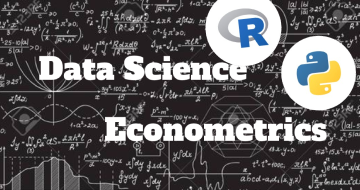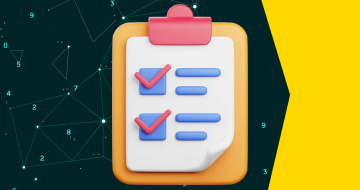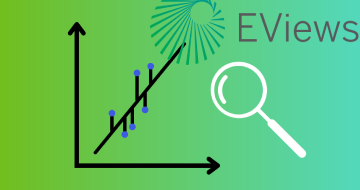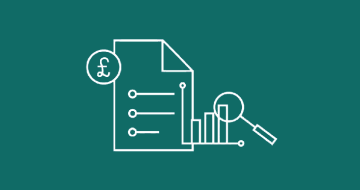IIRF Online > Finance & Accounting > Economics > Econometrics > Econometrics and Statistics for Business in R & Python
Econometrics and Statistics for Business in R & Python by Udemy
Learn Causal Inference & Statistical Modeling to solve finance and marketing business problems in Python and R
Course Highlights
- Understand the application of econometric techniques in business settings
- Apply Google's Causal Impact to measure the effect of an intervention on a time series.
- Code econometric techniques in R and Python from scratch.
- Solve real business or economic problems using econometric techniques.
- Use propensity score matching to compare outcomes between groups while controlling for confounding variables.
- Develop an intuitive understanding of Difference-in-differences, Google's Causal Impact, Granger Causality, Propensity Score Matching, and CHAID
- Perform Granger causality to test for causality between two time series.
- Develop intuition for econometric techniques through business case studies.
- Practice coding and applying econometric techniques through challenging and interesting problems.
- Understand and apply basic statistical concepts and techniques in real-life business cases
Skills you will learn!
Curriculum
6 Topics
Course introduction and structure
Course content
Installing R and RStudio
Installing Python and Spyder
How to get more from the course
Future of this course and reviews
8 Topics
Difference-in-differences use cases
Difference-in-Differences framework
Modelling Difference-in-differences
Difference-in-differences assumptions
Difference-in-differences step by step guide
Linear Regression crash course
Linear Regression output summary
Dummy variable trap
8 Topics
Getting dataset and code templates folder
Intro to RStudio and data loading
Dealing with NAs part 1
Dealing with NAs part 2
First linear regression model
Second linear regression model and dummy variable trap
Last linear regression
Presenting results
8 Topics
Getting datasets and code templates folder
Intro to Spyder and loading data
Dealing with NAs
Isolating X and Y variables
First linear regression model
Second linear regression model and dummy variable trap
Last linear regression
Your feedback is valuable
3 Topics
Introducing second case study
Logistic Regression crash course
Placebo test mechanics
8 Topics
Getting datasets and code templates folder
Loading data and inspecting it
Defining variables
First Logistic Regression in R
Second Logistic Regression Model
Visualizing results
Preparing variables and dataset for placebo experiment
Logistic Regression and Placebo experiment
8 Topics
Getting datasets and code templates folder
Loading data and inspecting it
Creating dummy variables
Splitting X and Y variables
First Logistic Regression in Python
Second Logistic Regression
Preparing dataset for placebo experiment
Logistic Regression and Placebo experiment
4 Topics
Introducing Causal Impact
Value added of Causal Impact
Step by step application guide
Case study briefing
10 Topics
Getting dataset and code templates folder
Code Update
Loading Facebook's stock price
Loading more stock prices
Plotting stock prices
Correlation Matrix
Choosing control group
Preparing dataset to run Causal Impact
Calculating the impact
Interpreting Causal Impact results
10 Topics
Getting datasets and code templates folder
Code Change
Loading Facebook's stock price
Preparing stock price dataset
Plotting stock prices
Correlation Matrix
Finishing up the control groups
Preparing dataset to run Causal Impact
Running Causal Impact
Interpreting Causal Impact results
6 Topics
Granger Causality use cases
Problem statement
Correlation is not causality!
Granger Causality framework
Stationarity
Granger Causality step by step guide and case study briefing
7 Topics
Getting dataset and code templates folder
Loading and inspecting data
Plotting time series
Stationarity check
Applying Granger Causality
Optimal number of lags and for loop part 1
Optimal number of lags and for loop part 2
9 Topics
Getting datasets and code templates folder
Loading data and inspecting it
Isolating eggs and chickens
Plotting time series
Stationarity check for eggs
Stationarity check for chickens
Making time series stationary
Preparing dataset for Granger Causality
Granger Causality
7 Topics
Propensity Score Matching use cases
Problem statement
Propensity Score Matching framework
Unconfoundness and Common Support Region
Propensity Score Matching step by step guide
T-test crash course
Case study briefing
13 Topics
Getting dataset and code templates folder
Loading data
Average income in 78 per group
Summary of Confounders' averages
T-Test function
Logistic Regression
Creating dataframe for common support region
Common Support Region
Propensity Score Matching
Propensity Score Matching Summary
T-Test on the matched groups
Impact assessment
Robustness check
11 Topics
Getting datasets and code templates folder
Loading and inspecting data
Summary of Confounders' averages
For loop and t-tests
Isolating treat and confounder variables
Logistic Regression
Creating dataset with propensities
Preparing dataset for Common Support Region
Common Support Region
Isolating Y treat and confounders
Propensity Score Matching
7 Topics
CHAID use cases
Problem statement
CHAID Framework
How CHAID works
Confusion Matrix
CHAID step by step guide
Case study briefing
17 Topics
Getting dataset and code templates folder
Loading data and analysis
Data structure and summary statistics
Forming factor only dataset
On installing CHAID
First CHAID model
Plotting CHAID
Chi-square test
Accuracy sensitivity and specificity
Driver Importance
Transforming numeric into factors part 1
Second CHAID model
Density plot for numerical variables
Transforming numeric into factors part 2
Transforming numeric into factors part 3
Third CHAID model
End of Course Feedback
1 Topic
Bonus Lecture

Econometrics and Statistics for Business in R & Python






